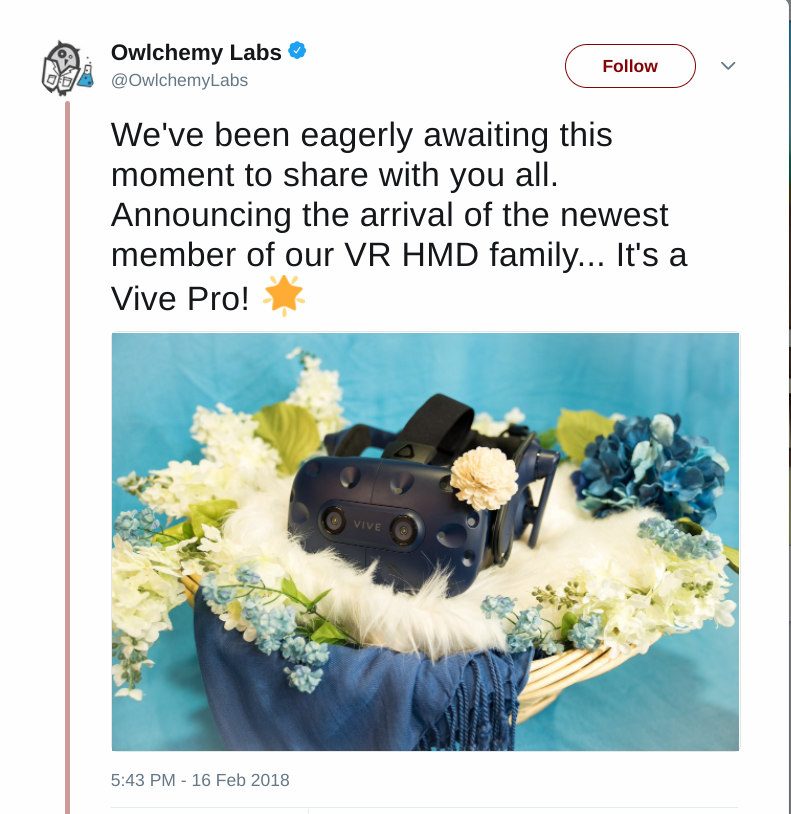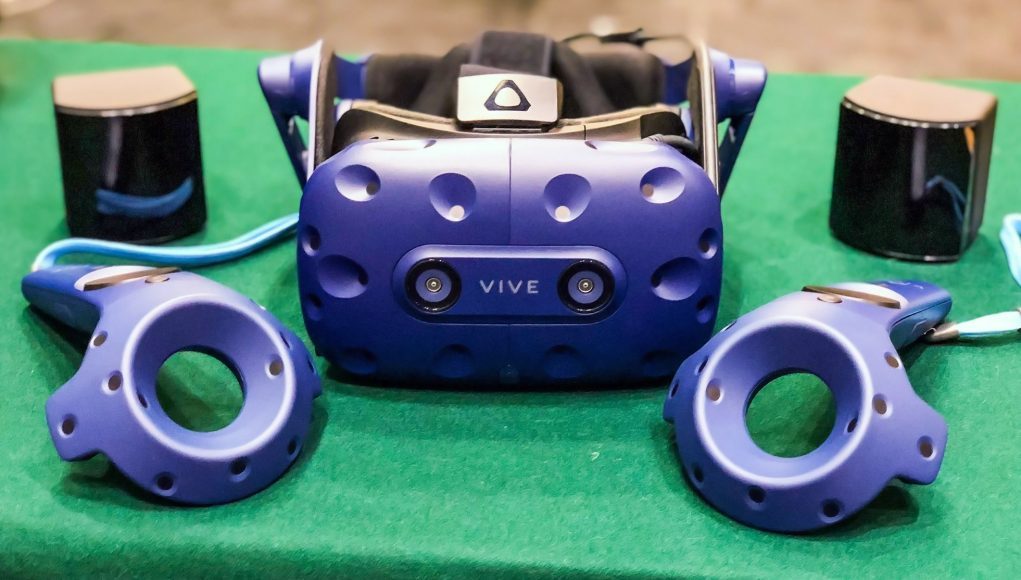Ostensibly the first batch of Vive Pro, HTC’s upcoming prosumer VR headset, is now landing on the doorsteps of developers. Owlchemy Labs, the studio behind Job Simulator (2016) and Rick and Morty: Virtual Rick-ality (2017), tweeted out that they’ve recently received what they call “the newest member of [their] VR HMD family.”
 While the headset’s main claim to fame is the 78% bump in resolution over the consumer Vive, boasting a 2880 × 1600 (1440 × 1600 pixels per display) AMOLED display over the original’s 2160 × 1200 resolution display, Vive Pro includes one substantial feature its predecessor doesn’t: dual front-facing VGA cameras, something Engadget reports can be used for basic hand-tracking and an enhancement to SteamVR’s chaperone system.
While the headset’s main claim to fame is the 78% bump in resolution over the consumer Vive, boasting a 2880 × 1600 (1440 × 1600 pixels per display) AMOLED display over the original’s 2160 × 1200 resolution display, Vive Pro includes one substantial feature its predecessor doesn’t: dual front-facing VGA cameras, something Engadget reports can be used for basic hand-tracking and an enhancement to SteamVR’s chaperone system.
It’ll be interesting to see what developers make of the new prosumer-focused headset, and whether any new game design conventions come from it.
No release info or pricing is available on Vive Pro yet, although we know it will be priced higher than the consumer Vive.







